
NPS Photo 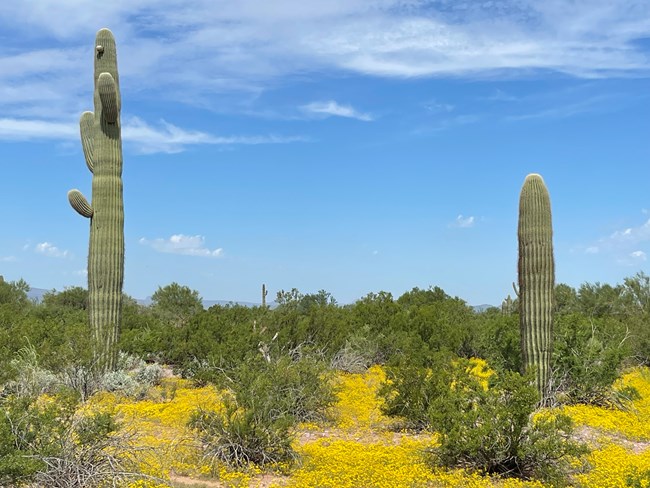
NPS Photo The Saguaro Cactus (Carnegiea gigantea)
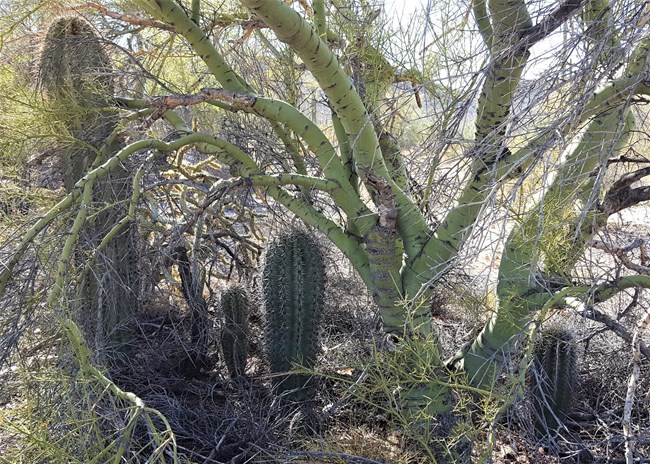
NPS Photo Nurse PlantsJust as we humans need nursing and caring for when we're young, many young cacti begin their lives under the protection of a nurse plant. While one saguaro can produce an estimated 20-40 million seeds in its lifetime, only a few seeds will actually sprout, and even fewer grow to maturity. Nurse plants protect the tiny, delicate cactus seedlings from temperature extremes and sunburn by providing shade. Slowly decaying leaf litter in the area of these plants provide nutrients and hide the young plants from hungry animals seeking a juicy bite of cactus salad. 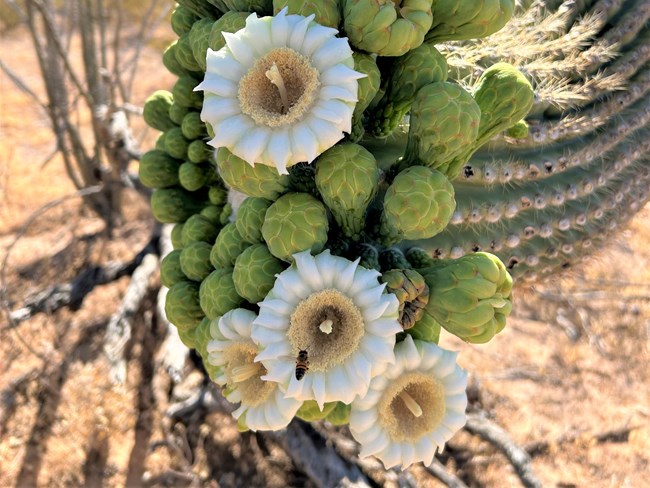
NPS Photo/Maria Singleton Saguaro GrowthThe saguaro cactus is the largest cactus in the United States. The saguaro cactus grows as a column at a very slow rate, with all growth occurring at the tip, or top of the cactus. It can take 10 years for a saguaro cactus to reach 1 inch in height, but these mighty cacti eventually grow to reach an average height of 40 feet, and the tallest saguaro ever measured towered over 78 feet into the air! By 70 years of age, a saguaro cactus can reach 6 and a half feet tall, and will finally start to produce their first flowers. By 95-100 years in age, a saguaro cactus can reach a height of 15-16 feet, and could start to produce its first arm. By 200 years old, the saguaro cactus has reached its full height, reaching upwards of 45 feet tall. Some saguaros have been seen with dozens of arms, while other cactus never produce a single one. Why this happens remains one of the desert’s mysteries. The saguaro cactus is a master of desert survival. Every aspect of this plant is specifically designed to thrive in the sometimes harsh Sonoran Desert. The skin of the saguaro cactus covered with a thick waxy coating that waterproofs the plant, and reduces water lost to the air through transpiration. The skin of the cactus is covered with hard spines and flexible bristles as a method of defending the water stored inside. 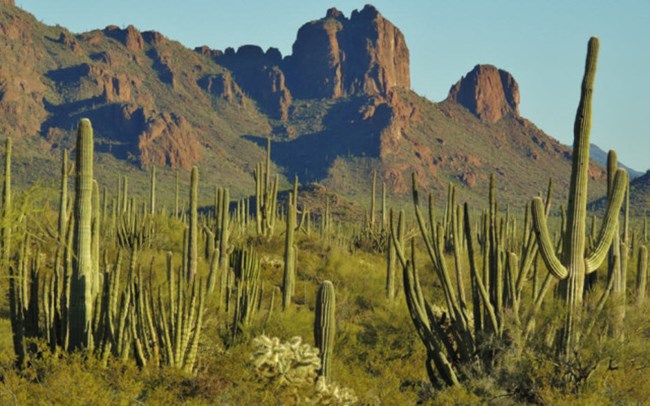
NPS Photo/Maria Singleton How Old Is that Saguaro?No one knows for certain. Estimating the age of a cactus is difficult. There are no annual growth rings as there are in trees; rainfall, soil conditions, and exposure to sunligh all influence the rate of growth for a saguaro. 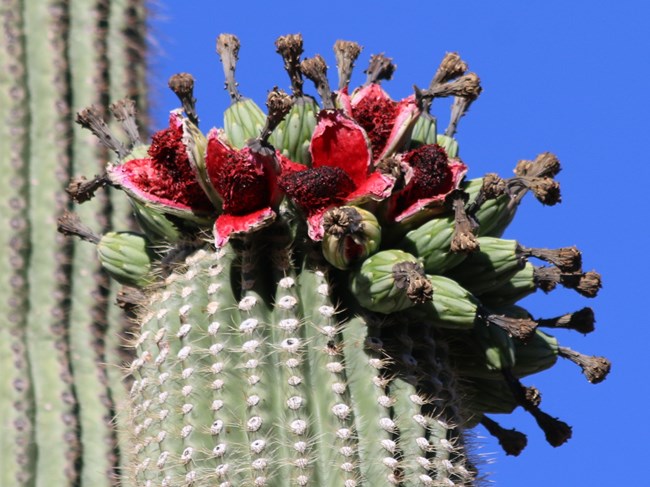
NPS Photo One Thirsty CactusThe root system of a saguaro cactus is impressive: the cactus will send a large, single taproot straight down into the soil to a depth of about 5 feet, which gives it access to water that is stored deep underground. The saguaro sends out a massive maze-like array of roots close to the surface as well to catch water near the surface. Very little water is instantly used; instead, most of the water collected ends up being stored within the cactus to use during periods of drought. The interior of the cactus is filled with a sponge-like tissue which is used to hold the water. As more and more water gets stored, the skin of the cactus begins to expand, making room for even more storage. As a result, the saguaro cactus can become quite heavy as more and more water is stored. At full capacity, a foot of saguaro cactus can weigh upwards of 90 pounds, and a full height saguaro can weigh over a ton! Saguaro FruitSaguaro cactus will produce flowers during late spring into early summer, and can produce tens of millions of seeds in its lifetime. In average years, the flowering occurs between April and June. The flowers are a milky white, and emit a sweet nectar which attracts multiple species of bats. These bats feast on the flower nectar, and in process act as pollinators for the saguaro cactus. As the cactus produce fruit, the bats will start to eat the fruits, and in turn help spread the saguaro seeds across the desert. Only a few of these sees actually sprout, and even fewer grow to maturity. |
Last updated: August 23, 2023
